Palmitoyl tetrapeptide-7 (Rigin™) is a synthetic tetrapeptide. The sequence of this peptide originates from a fragment of the heavy chain of Immunoglobulin G (IgG), a key protein the human body produces. Linked at its N-terminus to palmitic acid through an amide bond, it transitions from being largely water soluble to a form with inherent lipophilicity. Enhanced penetration of the skin’s stratum corneum barrier is possible, reaching various points within the dermis.
Sequence
Pal-Gly-Gln-Pro-Arg-OH
CAS Number
221227-05-0
Molecular Formula
C34H62N8O7
Molecular Weight
694.91 g/mol
Research Of Palmitoyl Tetrapeptide-7
Palmitoyl Tetrapeptide-7 draws direct inspiration from endogenous biomolecules; the core tetrapeptide itself (Gly-Gln-Pro-Arg) corresponds to specific amino acids (341-344 if remembered correctly) on IgG. IgG itself is one of the more important antibodies, central to many forms of immune regulation.
Mimicking this fragment confers the unique biological activity associated with Palmitoyl Tetrapeptide-7 – immune modulation being the prime example, anti-inflammatory functions.
Acting as a signaling peptide, direct structural ‘supplementation’ of the skin is not its primary function; binding to certain cell surface receptors and the subsequent transmission of at least partially defined biological signals is what it achieves.
Cellular repair and regenerative type behavior follows from these signals.
Reduction of basal interleukin-6 secretion, post UVB induced inflammation being one of the more measurable effects, is well documented.
Laminin and various collagens (VII if I recall correctly) are all positively influenced by treatment.
Glycation damage (to some extent) is also lessened by the anti-inflammatory actions of the peptide.
In vivo reflectance confocal microscopy studies showed a clear enhancement of the extracellular matrix structure in treated subjects.
Over 60 volunteers, treated with a topical formulation containing Palmitoyl Tetrapeptide-7, showed a significant and quantifiable improvement in photoaged skin, with all or part of the above mentioned benefits being the end result of improved skin appearance.
In commercial applications, Palmitoyl Tetrapeptide-7 is often combined with Palmitoyl Tripeptide-1 to form the well-known ingredient complex Matrixyl 3000.
These two peptides work synergistically; Palmitoyl Tripeptide-1 primarily promoting collagen synthesis, and Palmitoyl Tetrapeptide-7 taking on the important anti-inflammatory role.
A more comprehensive approach to combating various aspects of skin aging is achieved through this combination.
Palmitoyl Tetrapeptide-7 itself is a highly effective signaling peptide, biomimetically designed.
Its unique dual-action mechanism – inhibiting the key inflammatory factor IL-6 (by mimicking small fragments of immunoglobulin IgG), delivering both anti-inflammatory and anti-glycation effects; simultaneously serving as a true signaling molecule to at least partially regenerate dermal fibroblasts (collagen, elastin, hyaluronic acid being the end products) – is what gives it such widespread and specific application value.
Anti-aging and repair oriented products will always have a place for this peptide.
COA
HPLC
MS




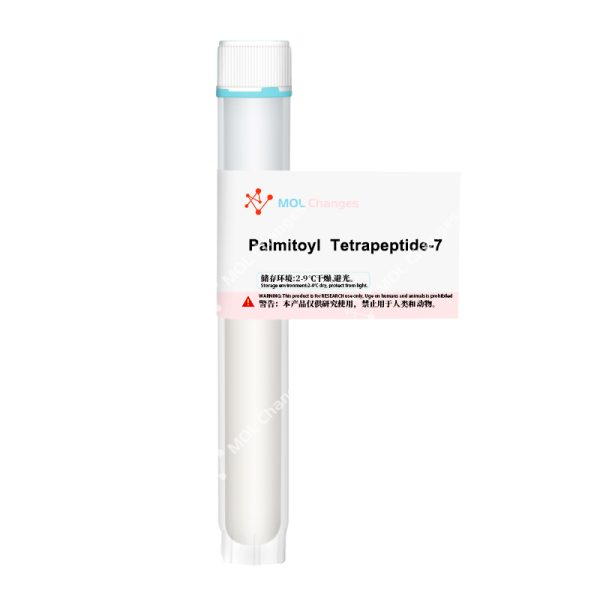
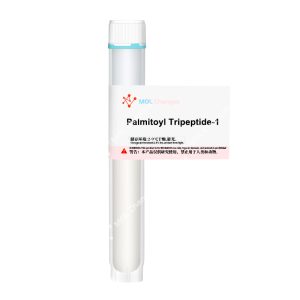
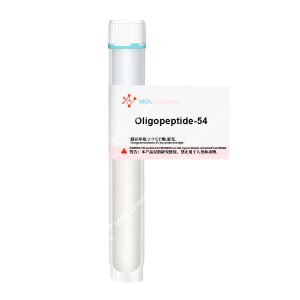
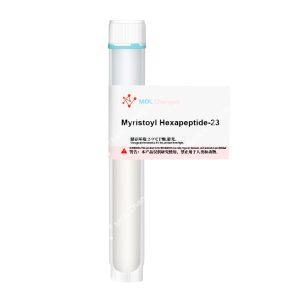
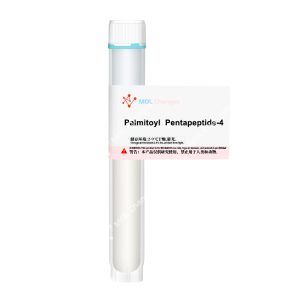
Reviews
There are no reviews yet.